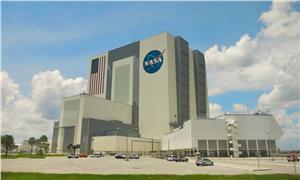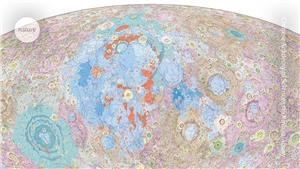Navigating the Cosmos: The Promise of Interplanetary GPS (IPGPS) - International Defense Security & Technology
Introduction
As human exploration of our solar system expands, the need for precise navigation, positioning, and timing services becomes increasingly vital. To address these challenges, space agencies around the world are exploring the concept of an Interplanetary GPS (IPGPS) system. IPGPS is envisioned as a network of satellites that would provide positioning, navigation, and timing (PNT) services for spacecraft and assets throughout the solar system. While IPGPS is still in its early stages of development, its potential implications are nothing short of revolutionary, reshaping the landscape of space exploration and operations. In this article, we'll delve into the various concepts and technologies that are being proposed for this groundbreaking space navigation system. Charting a Course Through the Cosmos
The concept of IPGPS follows the same principles as the Global Positioning System (GPS) that we rely on here on Earth. A network of satellites positioned throughout the solar system would transmit radio signals, which would be received by spacecraft and assets in need of navigation assistance. By precisely measuring the time it takes for these signals to reach them, the spacecraft can accurately determine its position relative to the satellites. Applications of IPGPS
The utility of IPGPS extends to a myriad of applications that can revolutionize space exploration and operations. Let's delve into some of the exciting possibilities it holds: - Autonomous Spacecraft Navigation and Guidance: IPGPS has the potential to empower spacecraft with autonomous navigation capabilities. Imagine spacecraft autonomously charting their course through the solar system, reducing the need for constant human intervention and significantly enhancing mission efficiency.
- Formation Flying and Rendezvous: For missions that require multiple spacecraft to work in tandem, IPGPS can enable precise formation flying and rendezvous. This capability is indispensable for assembling large spacecraft in space and exploring the surfaces of distant planets and moons.
- Precision Landings: IPGPS can usher in an era of precision landings on other celestial bodies. This precision is vital for delivering robotic explorers and even astronauts to their intended destinations on planets and moons across the solar system.
- Navigation for Robotic Explorers: IPGPS can provide robotic explorers with the means to autonomously navigate on the surfaces of other planets and moons. This increased autonomy allows for more extensive exploration, data collection, and scientific research.
- Time Synchronization for Scientific Experiments: One of the most exciting applications of IPGPS is its ability to provide precise time synchronization for scientific experiments throughout the solar system. This synchrony allows scientists to collect data from multiple locations simultaneously, significantly improving the accuracy and resolution of their experiments.
Overcoming Cosmic Challenges
However, realizing the vision of IPGPS comes with its own set of challenges. Unlike Earth's Global Positioning System (GPS), which relies on a network of satellites orbiting our planet, IPGPS faces vast distances, gravitational effects, and the need for autonomous operation. The vast distances involved in interplanetary travel present a substantial hurdle. Unlike GPS satellites, which orbit Earth at a distance of about 20,200 kilometers, IPGPS satellites may need to be positioned hundreds of millions of kilometers apart to ensure signals are strong enough to reach spacecraft across the solar system. Another challenge is the effects of relativity, specifically relativistic time dilation. Gravitational forces from celestial bodies can affect the precision of the atomic clocks on the satellites, necessitating more precise clocks or advanced algorithms to compensate for these relativistic effects. Concepts and Technologies for IPGPS
Despite these challenges, the interest in developing an IPGPS system is significant. Space agencies like NASA, the European Space Agency (ESA), and others are actively exploring IPGPS concepts and technologies. - Interplanetary Satellite Constellations: Much like the GPS constellation around Earth, IPGPS would involve deploying a network of satellites throughout the solar system. These satellites would transmit signals to spacecraft, enabling them to determine their position relative to the satellites.
- Deep Space Atomic Clocks: To tackle the challenges posed by relativistic time dilation, deep space atomic clocks are being developed. These ultra-precise timekeepers can account for time distortions caused by gravitational forces from celestial bodies.
- Communication Infrastructure: IPGPS relies on robust communication systems to transmit and receive signals across interplanetary distances. High-frequency radio and optical communication systems are being explored to ensure reliable data transmission.
- Lagrange Points: Leveraging Lagrange points is another concept. These stable regions in space offer ideal locations for IPGPS satellites to provide continuous coverage throughout the solar system.
- Laser Ranging Systems: Laser ranging systems enable precise measurement of distances between spacecraft and IPGPS satellites, significantly enhancing the accuracy of position determination.
- Advanced Algorithms: Advanced algorithms and software are under development to compensate for relativity and other factors. These algorithms can correct for time dilation and ensure accurate positioning.
- Autonomous Navigation: AI and machine learning algorithms are being explored to enable autonomous spacecraft navigation. These systems can analyze data from IPGPS satellites to make real-time decisions on course adjustments and positioning.
- International Collaboration: The scale and complexity of IPGPS necessitate international collaboration. Space agencies worldwide are pooling their resources, knowledge, and expertise to accelerate IPGPS development.
- Sustainable Power Sources: Sustaining power sources for IPGPS satellites is crucial for long-term operation. Solar panels and advanced energy storage systems are being considered.
- Interplanetary Network Protocols: Specialized network protocols designed for interplanetary communication are essential. These protocols must handle data transmission over vast distances with minimal delays.
- Miniaturized Spacecraft: Miniaturized spacecraft, such as CubeSats, are considered for IPGPS deployment due to their compact size and reduced cost.
- Navigation Beacons: Fixed or mobile navigation beacons on celestial bodies, like the Moon or Mars, can provide additional reference points for spacecraft, enhancing positioning accuracy.
Deep Space Atomic clocks
Deep Space Atomic Clocks (DSACs) are cutting-edge timekeeping devices that hold the promise of transforming space exploration and navigation. Unlike traditional atomic clocks, DSACs are exceptionally precise and have been designed to withstand the harsh conditions of deep space. DSACs operate on the fundamental principle of atomic resonance, leveraging the innate frequency at which atoms absorb or emit photons of light. By measuring this natural frequency, DSACs maintain time with unparalleled accuracy. One of the unique features of DSACs is their immunity to the effects of gravity, a significant limitation of conventional atomic clocks. The Earth's gravitational pull can cause subtle frequency drift in traditional clocks, which can become significant during extended space missions. DSACs, on the other hand, employ a technique known as "ion trapping" to securely confine the atoms, shielding them from the influence of gravity. This capability allows DSACs to deliver unprecedented timekeeping precision in the unforgiving environment of deep space. The benefits of DSACs extend to various aspects of space exploration and navigation. They have the potential to: - Enhance Spacecraft Navigation: DSACs offer the opportunity to enhance spacecraft navigation by providing an exceptionally accurate reference time. This is particularly valuable for extended missions, such as those destined for Mars or other distant celestial bodies.
- Enable Scientific Discoveries: DSACs pave the way for new scientific experiments that demand precise timekeeping. For instance, they can be instrumental in measuring the speed of light with previously unattainable accuracy, contributing to advancements in fundamental physics.
- Improve GPS Performance: By delivering a more accurate reference time, DSACs can enhance the performance of global positioning systems (GPS). This translates to improved precision in GPS positioning and timing, benefiting various space-related applications.
Despite the immense potential of DSACs, several challenges must be addressed to facilitate their widespread use in space missions. These challenges encompass the size of DSACs, their power consumption, and the associated costs. DSACs are currently relatively large and power-hungry, making integration into spacecraft with limited resources a complex endeavor. Additionally, the development and production of DSACs can be cost-prohibitive. Nonetheless, researchers and engineers are actively working to overcome these challenges and further refine DSAC technology. As progress is made in addressing size, power consumption, and cost constraints, DSACs are expected to play an increasingly significant role in future space exploration. Anticipated applications of DSACs in the coming years include spacecraft navigation to distant interplanetary destinations, the synchronization of clocks on orbiting satellites to enhance GPS accuracy, and the measurement of fundamental constants of physics, such as the speed of light. DSACs represent a revolutionary leap in space technology, holding the potential to redefine the way we explore and understand the cosmos. With ongoing research and development efforts, DSACs are set to become an indispensable tool for unlocking the mysteries of the universe. Conclusion
Interplanetary GPS (IPGPS) is an exciting concept that could revolutionize space exploration and operations. While it is still in the early stages of development, IPGPS holds significant promise for enabling accurate and reliable navigation throughout our solar system. With collaboration between space agencies and ongoing technological advancements, the vision of IPGPS is edging closer to becoming a reality, unlocking new frontiers in space exploration. As we continue to expand our presence beyond Earth, IPGPS may become an indispensable tool for interplanetary navigation and positioning. 2024-04-16 Rajesh Uppal Share









